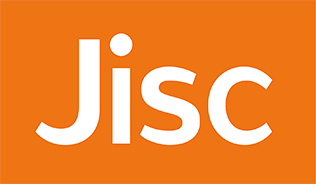Impact of Financial Leverage, Investment and Dividend Payments on Likelihood of Financial Distress in Emerging Markets
DOI:
https://doi.org/10.54536/ajebi.v4i1.3692Keywords:
Dividend Payment Ratio, Financial Decision, Financial Leverage, Investment RateAbstract
Financial distress poses a significant challenge for companies around the globe, often resulting from a complex interplay of financial decisions. Understanding the factors that contribute to this risk is crucial for firms seeking to navigate the complexities of financial management. This research explores how these key financial decisions (Financial leverage, investment rate and dividend payment ratio) impact a company’s likelihood of experiencing financial distress. The study initially considered 65 firms listed on the Nairobi Securities Exchange (NSE) as of December 2021. Applying specific inclusion and exclusion criteria, the research narrowed this down to 45 firms that were operational throughout the study period from 2008 to 2021, resulting in 630 firm-year observations in total. The study utilized secondary data from annual financial reports and employed descriptive and inferential statistical methods. The study used panel logistic regression to test hypotheses, providing a robust understanding of the data. The study results specifically indicate a positive and significant effect of financial leverage (β = 0.238, ρ<0.05) and investment rate (β=2.199, ρ<0.05) on the likelihood of financial distress, while dividend payout policy had a negative and significant effect (β= -1.852, ρ<0.05 on the likelihood financial distress. Specifically, the results suggest that high financial leverage and high investment rate significantly elevate this risk, while the dividend payout ratio reduces it. Ultimately, this study highlights the need for companies to align their financial decisions with long-term sustainability goals to ensure their ongoing stability and success.
Downloads
References
Acharya, V. V., Le, H., & Shin, H. S. (2017). Bank capital and dividend externalities. The Review of Financial Studies, 30(3), 988–1018.
Ahmadi, R., & Kordloei, M. H. (2018). The impact of investment decisions on financial distress: Evidence from listed companies in Tehran Stock Exchange. Journal of Applied Finance and Banking, 8(3), 45-67.
Akerlof, G. A. (1970). The market for “lemons”: Quality uncertainty and the market mechanism. Quarterly Journal of Economics, 84(3), 488-500.
Ali, H. (2022). The effect of dividend payout on financial distress. Journal of Financial Economics, 45(2), 123–145.
Ali, M. (2022). Dividend payout policy and financial distress: Evidence from emerging markets. International Journal of Business and Management, 17(2), 65–79.
Ambarish, R., John, K., & Williams, J. (1987). Efficient signaling with dividends and investments. Journal of Finance, 42(2), 321-343.
Andriosopoulos, D., De Cesari, A., & Stathopoulos, K. (2021). Dividend policies and corporate distress during the COVID-19 pandemic. Journal of Financial Stability, 53, 100826.
Aras, G., & Yildirim, E. (2018). Corporate governance and corporate financial distress: Evidence from Turkey. Emerging Markets Finance and Trade, 54(6), 1294–1310.
Aziz, A., & Lawson, G. H. (1989). Cash flow reporting and financial distress models: Testing of hypotheses. Financial Management, 18(1), 55-63.
Baumol, W. J. (1959). Business behavior, value, and growth. Macmillan.
Beatty, A., Liao, S., & Weber, J. (2012). Financial reporting quality, private information, monitoring, and the lease-versus-buy decision. The Accounting Review, 85(4), 1215-1238.
Bhatt, P. R., & Bhatt, R. R. (2017). Corporate governance and firm performance in Malaysia. Corporate Governance: The International Journal of Business in Society, 17(5), 896-912. Chen, C. C., Chen, C., & Lien, C. (2020). The impact of external shocks on corporate financial distress: Evidence from the COVID-19 pandemic. Finance Research Letters, 38, 101-107.
Damodaran, A. (2010). Applied corporate finance (3rd ed.). Wiley.
DeAngelo, H., & DeAngelo, L. (1990). Dividend policy and financial distress: An empirical analysis of failed firms. Journal of Finance, 45(5), 1415–1431.
Dittmar, A., Mahrt-Smith, J., & Servaes, H. (2003). International corporate governance and corporate cash holdings. Journal of Financial and Quantitative Analysis, 38(1), 111–133.
Dirman, A. (2020). Financial leverage and corporate financial distress: A study of Indonesian companies. Journal of Economics and Business, 7(1), 102–112.
Easterbrook, F. H. (1984). Two agency-cost explanations of dividends. American Economic Review, 74(4), 650–659.
Eldomiaty, T. I., Andrikopoulos, P., & Bishara, E. (2019). The determinants of financial distress in developing economies: Evidence from Egypt. Journal of Business Research, 101, 65-79.
Evans, D. S. (1987). The relationship between firm growth, size, and age: Estimates for 100 manufacturing industries. The Journal of Industrial Economics, 35(4), 567–581.
Fama, E. F., & French, K. R. (2001). Disappearing dividends: Changing firm characteristics or lower propensity to pay? Journal of Financial Economics, 60(1), 3–43.
Finishtya, I. (2019). Does leverage affect the likelihood of financial distress? Empirical evidence from Indonesian listed companies. Journal of Accounting and Finance, 8(2), 98–110.
Gentry, J. A., Newbold, P., & Whitford, D. T. (1985). Classifying bankrupt firms with funds flow components. Journal of Accounting Research, 23(1), 146–160.
Giarto, D., & Fachrurrozie, M. (2020). Leverage and the likelihood of financial distress: Evidence from manufacturing firms. International Journal of Economics and Finance, 12(3), 45–58.
Gordon, M. J. (1963). Optimal investment and financing policy. Journal of Finance, 18(2), 264–272.
Hauser, R. (2013). Dividends and financial distress: Evidence from the initiation of dividends. The Journal of Financial Research, 36(4), 441–465.
Harkavy, O. (1953). The relation between retained earnings and common stock prices for large, listed corporations. Journal of Finance, 8(3), 283–297.
Jaafar, M., Muhamat, A. A., Alwi, M., Karim, M., & Rahman, A. (2018). Financial leverage and corporate distress: An empirical study of Malaysian firms. International Journal of Business and Society, 19(1), 105–121.
Jensen, M. C. (1986). Agency costs of free cash flow, corporate finance, and takeovers. American Economic Review, 76(2), 323–329.
Jensen, M. C., & Meckling, W. H. (1976). Theory of the firm: Managerial behavior, agency costs and ownership structure. Journal of Financial Economics, 3(4), 305–360.
Juhandi, N., Sudarma, M., & Arifin, Z. (2020). The influence of dividend policy on the financial distress of food and beverage companies listed on the Indonesia Stock Exchange. The Journal of Asian Finance, Economics and Business, 7(12), 103–113.
Kester, W. C. (1986). Capital and ownership structure: A comparison of international and domestic firms. Journal of Financial Economics, 14(1), 63–80.
Kim, H., & Ryu, H. (2018). The effect of dividends on the likelihood of financial distress: Evidence from the Korean market. Asian Journal of Finance & Accounting, 10(2), 89–100.
Koller, T., Goedhart, M., & Wessels, D. (2010). Valuation: Measuring and managing the value of companies (5th ed.). Wiley.
Lang, L. H. P., & Stulz, R. M. (1992). Contagion and competitive intra-industry effects of the East Asian currency crisis. Journal of Financial Economics, 33(2), 207-238.
Lins, K. V. (2003). Equity ownership and firm value: Evidence from the East Asian financial crisis. Journal of Financial Economics, 68(1), 47–67.
Maksimovic, V., & Phillips, G. (2013). The industry life cycle and acquisition and divestiture activity. Journal of Finance, 68(2), 1235–1260.
Miller, M. H., & Rock, K. (1985). Dividend policy under asymmetric information. Journal of Finance, 40(4), 1031-1051.
Mollah, M. A., & Kabir, S. M. (2018). Financial leverage and corporate financial distress: Evidence from the textile sector of Bangladesh. Journal of Risk Finance, 19(4), 311–324.
Myers, S. C. (1984). The capital structure puzzle. Journal of Finance, 39(3), 575–592.
Myers, S. C., & Majluf, N. S. (1984). Corporate financing and investment decisions when firms have information that investors do not have. Journal of Financial Economics, 13(2), 187–221.
Opler, T., & Titman, S. (1994). Financial distress and corporate performance. Journal of Finance, 49(3), 1015–1040.
Rajan, R. G., & Zingales, L. (1995). What do we know about capital structure? Some evidence from international data. Journal of Finance, 50(5), 1421–1460.
Rani, N., & Khanna, S. (2017). Impact of capital structure on financial distress of Indian firms: Evidence from BSE. International Journal of Economics and Finance, 9(4), 57-66.
Rashid, A., & Hossain, M. (2018). Corporate governance and financial distress: Evidence from the banking sector in Bangladesh. Corporate Governance: The International Journal of Business in Society, 18(5), 881–896.
Ross, S. A. (1977). The determination of financial structure: The incentive-signaling approach. The Bell Journal of Economics, 8(1), 23–40.
Sailesh, K., & Sethi, N. (2021). Determinants of financial distress in Indian firms: An empirical investigation. International Journal of Business and Management, 16(4), 50–66.
Shleifer, A., & Vishny, R. W. (1997). A survey of corporate governance. Journal of Finance, 52(2), 737-783.
Smith, C. W., & Watts, R. L. (1992). The investment opportunity set and corporate financing, dividend, and compensation policies. Journal of Financial Economics, 32(3), 263-292.
Wang, Y., & Wang, H. (2019). Corporate governance and financial distress: A study of listed companies in China. Emerging Markets Finance and Trade, 55(7), 1589–1602.
Downloads
Published
How to Cite
Issue
Section
License
Copyright (c) 2025 Rodgers Kimutai Maiyo, Josephat Cheboi, Patrick Limo

This work is licensed under a Creative Commons Attribution 4.0 International License.














